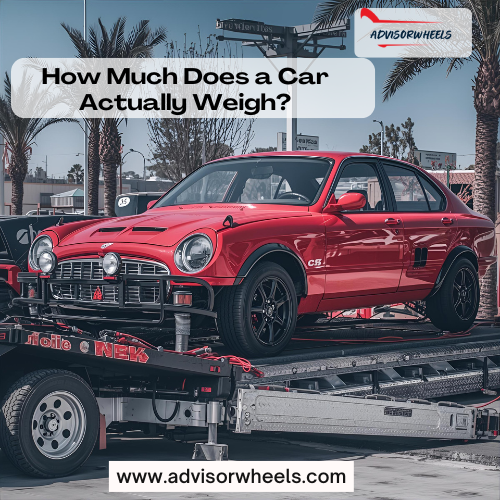Why Car Weight Matters More Than You Think in 2025

On the one hand, power, features and price are the reasons why most Indian car buyers are obsessed but nearly no one will make a simple question: how much does a car weigh? That single figure keeps making some background noise in 2025 when it decides how much you pay in fuel and electricity, whether you will be safe, your brakes will stop, and even your insurance. The median weight of a new vehicle sold in India nowadays is more than 1,450 kg or nearly 300 kg greater than what it was fifteen years ago. This is the reason why you should pay attention to those extra kilos before you place your signature on the dotted line.
What “Car Weight” Really Means
When discussing car weight we refer to the kerb weight, that is the weight of the car as it comes out of showroom with all the fluids and full-filled gas tank but without passengers and luggage. There is also a mention of Gross Vehicle Weight Rating (GVWR) that is maximum safe weight with people and cargo. An example is a Maruti Swift which has a kerb weight of only 970 kg yet has GVWR of 1,335 kg, which translates to about 365 kg of five occupants and luggage.
Fuel Economy: Every 50 kg Costs You Money Daily
Each 50 kg of added weight in the petrol and diesel cars decreases the mileage in the actual Indian real world conditions by 0.4-0.6 km/l. A Hyundai Venue (1,210 kg) usually covers 2 km/l in addition to its larger sibling Creta (1,450 kg) on the same Mumbai-Pune route, despite having the same engine. The penalty is even worse to CNG buyers since the volume of gas cylinders remains constant i.e. a heavier body translates to less kilometres per fill.
Electric Range: The Silent EV Killer
Battery weight is the biggest reason most electric cars are heavy. Every extra 100 kg steals roughly 8–12 km of range. The lighter Tata Nexon EV Prime (1,405 kg) consistently delivers 10–15 km more than the heavier MG ZS EV (1,610 kg) in the same city traffic. If you’re spending ₹12–15 lakh on an EV, those missing kilometres translate into thousands of rupees over five years.
Safety: Heavier Is Not Always Safer Anymore
The old belief that “bigger and heavier = safer” is breaking in 2025. Lighter cars like Tata Punch and Altroz score 5 stars in Global NCAP because modern steel and design are smarter, not just heavier. In many accidents involving a light hatchback and a heavy SUV, the lighter car’s occupants actually walk away safer because crash forces are lower.
Braking and Handling: Physics Never Lies
Even with the same tyres and brakes, a car weighing 2,000 kg will require much more distance to decelerate than one with the same brakes and tyres, but weighing 1,000 kg. Many heavy electric SUVs require 35 metres or more to come to a stop during the emergency braking, at speeds of 80 km/h - this is the length of a car. Light cars are alive and sure upon twisty ghat roads; heavy cars are lethargic and nose-heavy.
Running Costs Beyond Fuel
Heavier vehicles destroy tyres and suspension parts faster. Many 2-tonne electric SUVs now need tyre replacement every 15,000–20,000 km instead of 40,000 km. Shock absorbers, ball joints, and brake pads also wear 30–50 % quicker, pushing service bills higher every year. Also read AdvisorWheels for more information.
Why Indian Cars Keep Gaining Weight in 2025
New Bharat NCAP safety standards require more powerful pillars and 6 airbags, which will increase the weight by 40-80 kg. The customers desire larger touchscreens, panorama sunroofs, and SUV ground clearance the feature adds pounds to the car. Things are worsened by electric batteries and ADAS radars. The result? The compact segment has already begun at 1,200 kg as compared to starting at 900 kg.
- Art
- Causes
- Crafts
- Dance
- Drinks
- Film
- Fitness
- Food
- Spiele
- Gardening
- Health
- Startseite
- Literature
- Music
- Networking
- Andere
- Party
- Religion
- Shopping
- Sports
- Theater
- Wellness



